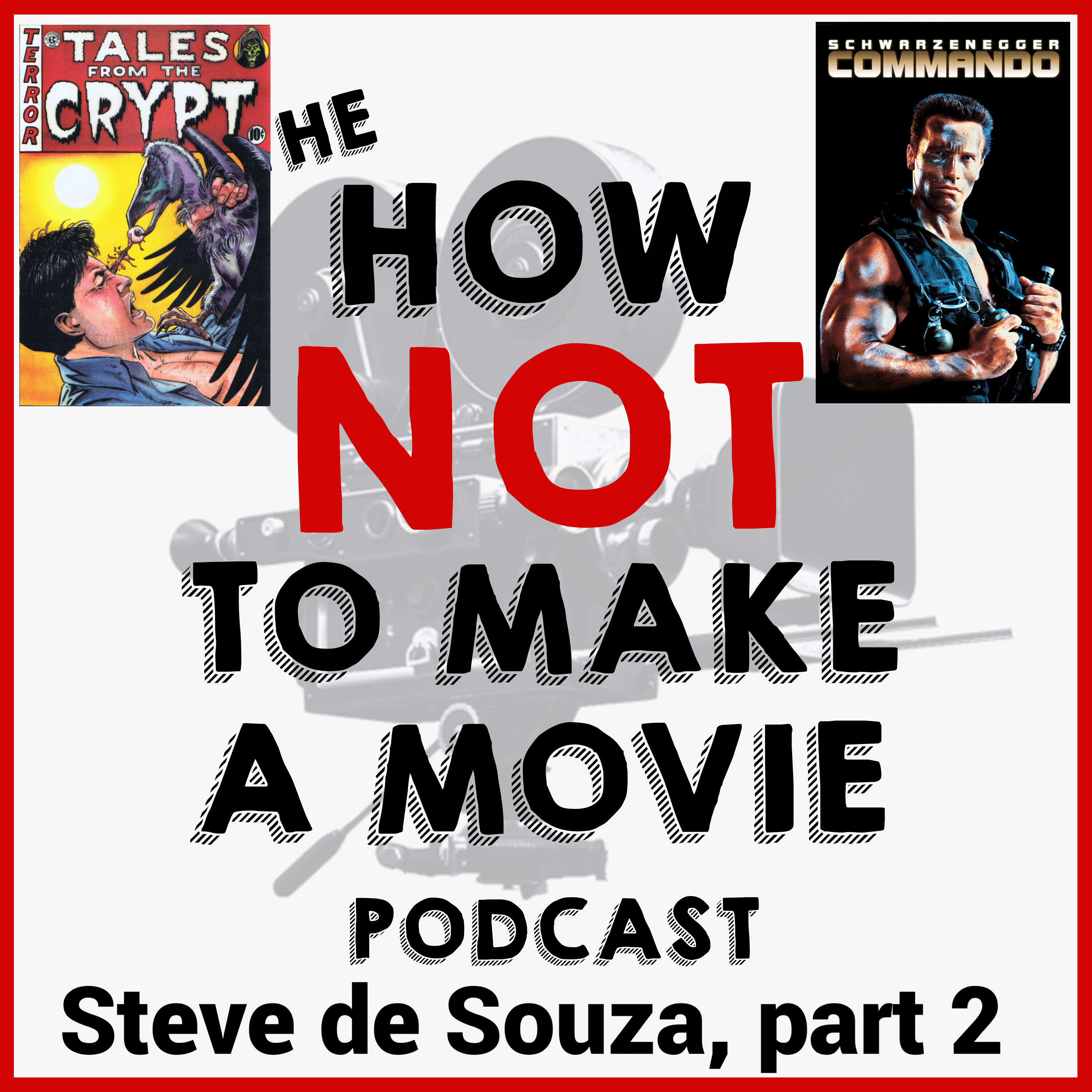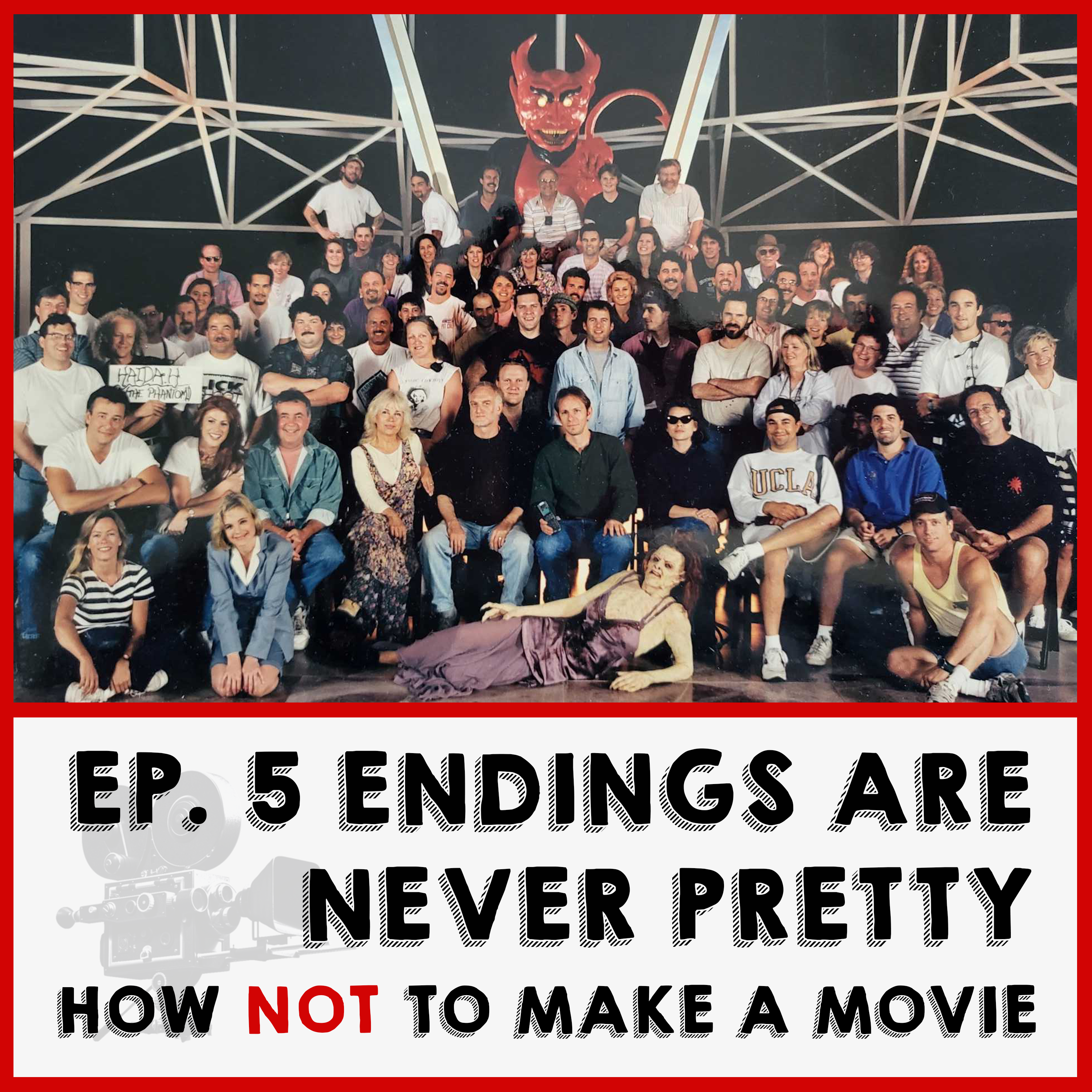
One of our big themes on this podcast is what happens when talented movie makers lose their minds… or their taste… or control over their movies.
You get a “Bordello of Blood” when big name, talented people make a movie none of them really wants to make. Plus an insane producer.
Caligula had the opposite problem – but with an insane producer.
Every big name that made Caligula wanted to make the movie and for almost entirely artistic reasons. Gore Vidal – the screenplay’s original author – had a clear vision for what he wanted…
Caligula’s original director – Tinto Brass – also had a clear vision. Problem was, his vision for the movie didn’t match Gore Vidal’s.
Or Bob Guccione’s. And Bob Guccione’s vision mattered more than anyone’s. That’s because all the money was his.
The result is a spectacular fiasco. It’s not just bad, it’s epically bad. Almost unwatchably bad. That’s harder to pull off than it looks. And I know from experience!
Caligula calls itself the most controversial film of all time. It might be right.
It’s not an easy movie to sit through. That’s regardless of which of the various cuts you watch. For clarity’s sake, I watched the uncut edition. It clocks in at 156 minutes.
A hundred-fifty-six ENDLESS minutes. And if I never see another naked body so long as I live, I’ll die happy. That’s one of the movie’s odd effects. There’s constant nudity. Fairly constant hardcore sex. And yet it never feels sensual or erotic or even remotely sexy.
The producer in me keeps shouting at it “No, no, no! Nudity doesn’t work here! It isn’t needed! Why are these people naked?”
To be honest, I find Caligula’s nudity downright oppressive. And inexplicable. In fact, the whole movie feels ill at ease. Like it knows it’s going places it shouldn’t.
A lot of people have thought about this movie and why it is the way it is. They’ve written books and shorts and academic papers on the subject.
Most of the criticism has landed squarely on Bob Guccione. Rightfully so. This movie is pretty much what Guccione wanted it to be. But, “Caligula” wasn’t his first time at the movie-making rodeo.
 Bob Guccione
Bob Guccione
In fact, Guccione had helped finance quite a few movies: Chinatown… The Longest Yard… Day Of The Locust.
The man had solid cinematic taste. He had a dream, too.
In an interview he gave to Penthouse – his own magazine – Guccione stated “I certainly didn’t set out to make a pornographic movie”. But then he says “it’s a question of definitions”. To him, porno was “a work of bad art as opposed to good art”.
Guccione wanted to make a “serious statement” with Caligula. His final word: “We’ve done with cinematic images what so many authors and historians have done with words”.
When Guccione says “we”, he means “he”. Guccione paid for Caligula all by himself. Every penny in was his.
Now, the idea of doing a movie about Caligula started with one of the gods of Italian cinema, Roberto Rosselini.
 Roberto Rossellini
Roberto Rossellini
On a Crypt-related side note, Roberto Rosselini was the father of Isabella Rosselini – one of the stars of the “You Murderer” episode.
Rosselini wrote a treatment. In his version, Caligula doesn’t start out a monster at all. Irfan Shah (writing in Cineaste in 2019) describes the Caligula in Rosselini’s original treatment as a “SELF AWARE REBEL TRYING TO SUBVERT A CORRUPT POLITICAL SYSTEM”.
Rosselini focused his lens on the gritty realities of post-war life in Italy. Before Rosselini though, Albert Camus had written a play about Caligula in the 1950’s. Camus’s Caligula is intellectually sophisticated, cruel but also sentimental. Irfan Shah argues that Rosselini’s Caligula starts where Camus’ Caligula left off. He’s a republican (with a small R) who wants to shock the status quo away from imperial lunacy and back to being a sensible republic.
Those are some fantastic ambitions for this story. It makes where it ended up that much more excruciating.
This movie mighta coulda been something. There are flashes of a really good movie trapped inside it!
Alas Rosselini couldn’t get any traction with his Caligula project. And he put it down…
His nephew FRANCO ROSSELINI picked it up. He turned to a friend for help – PAUL MORRISSEY – who had just made two films in Italy for ANDY WARHOL. Morrissey turns Rossellini onto the idea of Gore Vidal. The problem: Gore Vidal will cost $225,000 – a shit-ton of money for a script back then.
And Italy had a law against paying any foreigner that kind of money for an Italian production. So, Rosellini needed a foreign partner to pay Vidal.
Gore Vidal, it turned out, owned a property in Manhattan. He had a tenant living in it – a guy named Jack Silverman who, it turned out, was the president of Penthouse Films and Penthouse Films, it turned out, was looking for a prestige project for its owner Bob Guccione to produce.
And THAT is how Caligula ended up with Guccione.
But, when Vidal finally turned in his first draft, Guccione hated it because Vidal’s script leaned heavily on gay sex scenes and not so heavily on straight sex. Sure, Guccione wanted to make a serious movie, but a serious movie with lots of (mostly straight) sex in it.
He hired a great – and expensive – cast of serious actors: Malcolm McDowell. Sir John Gielgud, Peter O’Toole, Helen Mirren and Maria Schneider.
Problem is, as his expensive cast began to show up, there still was no director. Guccione heard about a guy named TINTO BRASS and screened Brass’s “Salon Kitty” – a WWII erotic war drama Brass directed.
 Tinto Brass directing
Tinto Brass directing
Depending on who you ask, Brass is either a hack or a genius. Most of the world says hack but German documentary film maker Alexander Tuschinski says genius. Tuschinski wrote his film school thesis on Tinto Brass and his original intentions for Caligula.
So – Guccione hires Brass and right off the bat, Brass declares Vidal’s script “too bourgeois” – the work of an aging arteriosclerotic”.
In response, Vidal tells the press “directors are parasites”. Brass bans him from the set.
Vidal – in response to that – takes his name off both the script and the movie itself which was originally going to be called GORE VIDAL’S Caligula.
Gosh, isn’t movie-making fun?
Now here’s an interesting story. According to John Heidenry in his book “What Wild Ecstasy: The Rise And Fall Of The Sexual Revolution”, this happened on day one of principle photography –
“Brass announced that the one thing banished from the set would be sexual inhibition. Then – with his wife, an astonished Guccione, and cast and crew members looking on – he preceded, with the help of a female extra, to demonstrate the proper way to perform cunnilingus.”
Wow… I’ve heard of giving line readings, but that’s nuts!
Shortly thereafter, Maria Schneider quit. She resented how sexualized the script had become. And she resented how her wardrobe seemed designed to expose her breasts every time she moved.
Brass replaced her with a more compliant actress, Teresa Ann Savoy.
Filming began in earnest in August 1976 at the DEAR studios in Rome. Danilo Donati stepped in as set designer and created twenty two sets including a giant, dry-docked, gold-leafed boat, a monstrous, manned decapitation device and palace interiors that resemble artificial theater sets.
As Irfan Shah points out, these were “a world away from the project’s original, grittier, neorealistic conception”.
Guccione wasn’t happy either and for his own reasons.
Guccione wanted an erotic epic but Brass kept hiring odd-looking extras that seemed to shit on the eroticism. Actress Helen Mirren described the experience as being “an irresistible mix of art and genitals.”
So – what was it like on the set? I chatted about that with Tales From The Crypt alum Malcolm McDowell.
Where Caligula is concerned, Malcolm is right. Guccione was evil. When actors agree to do a movie, they expect the movie to be what they agreed to. They certainly don’t expect to have shots of people masturbating or sucking dick or ejaculating intercut with their acting.
That’s what’s so disconcerting about the experience of watching Caligula. There’s no other movie like it. First, it makes zero sense to intercut to the sex where the movie intercuts to the sex, but, second, the sex itself completely lacks any human-ness. It’s utterly robotic and impersonal.
As movie critic Roger Ebert also put it in his review of Caligula, it’s not even good porn.
When principle photography finished, Guccione fired Tinto Bras and took over the cut. He brought back a bunch of the extras he’d hired and flew in more Penthouse Pets. Acccording to Irfan Shah, most of the pets thought they were there to appear in a James Bond movie.
After shooting twelve thousand feet of hard core action in the DEAR studio basement, Guccione retired to London’s Twickenham studios where he holed up in an editing suite and proceeded to create one of the primo examples ever of how NOT to make a movie.
Like I said, watching Caligula is truly an odd experience. There are some very good scenes in the movie. There’s some good acting. There are beautiful shots throughout. But we never feel anyone’s humanity (except when they’re being tortured or brutally killed).
Film is a language and Caligula has a strange, hard-to-place accent. The fact that it misses as a movie isn’t just Guccione’s fault.
It’s Tinto’s fault, too.
If Gil and I had been sent Tinto’s reel while we were doing Crypt – we weren’t, I’m just saying “if” – I doubt we would have hired him. Our approach to shooting a scene was very different from his. He shoots everything with a wide master. Instead of cutting to reaction shots, he often pans to them. Or zooms. This isn’t the best use of the cinematic language.
While this style of shooting and editing captures everything – and feels immediate – it never feels intimate. There’s a very good reason for why we shoot things the way we shoot them.
For all its many, many faults and flaws, Caligula continues to fascinate. Documentary film maker Tom Negovan has been working on a cut of Caligula that, supposedly, will drop this year!
In fact, a new cut of Caligula played at this year’s Cannes Film Festival! Dozens of people walked out. As they say in France, “Plus ca change, plus c’est la meme chose”.
Translation: Caligula simply will not go away.
Here’s one final irony: it’s entirely possible that the real Caligula was nothing like the childish mad man we’ve depicted.
According to the BBC, “the evidence for Caligula’s monstrosity isn’t quite as clear-cut”. Most of what we think about Caligula was written long after he was gone. The few contemporaneous, eyewitness accounts of Caligula’s reign fail to mention any of the worst stories. Like incest with his sister. Or making his horse a consul.
No Roman writer ever said that he made his horse a consul. Philo, a high-ranking Jewish ambassador described Caligula as a rather menacing jokester, but nothing worse.
Caligula had enemies. His enemies assassinated him and then had the final word on who Caligula was. It could well be that Caligula is the victim of bad reviews that deliberately took him out of context.
Been there, done that.



Steve de Souza has even more stories to tell and they’re epic. This episode picks up where E4 left off. And then it gets...

As the production of “Bordello Of Blood” stumbled toward its climax, we knew we’d leave Vancouver with an unfinished movie in hand. That was...

Among Hollywood producers, CHRIS BOARDMAN is famous for being one of those very rare musicians who can write literally anything. Over his extraordinary career,...